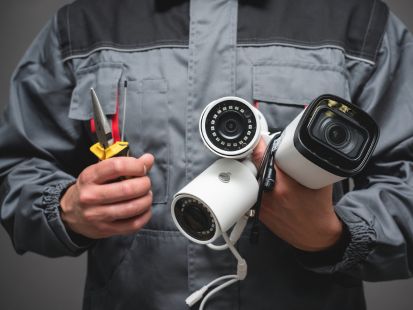When it comes to protecting your home, security cameras are an invaluable tool. With technological advancements, these devices offer more features than ever, ensuring your property remains safe. This guide will help you understand what to look for in home security cameras, especially if you’re considering security cameras in NZ.
Types of Home Security Cameras
Selecting the right type of security camera is the first step. There are several options, each suited for different needs:
Indoor Cameras: Indoor security cameras are perfect for monitoring the inside of your home. They come in various styles, including fixed, pan-tilt-zoom (PTZ), and hidden cameras. Look for features like high resolution, two-way audio, and easy installation.
Outdoor Cameras: Outdoor security cameras are designed to withstand the elements. When shopping for outdoor security cameras in NZ, consider models with weather-resistant features and robust build quality. Key features to look for include high-definition video, night vision, and motion detection.
Doorbell Cameras: Doorbell cameras combine a doorbell with a security camera, allowing you to see and speak with visitors via your smartphone. They are particularly useful for monitoring front door activity and package deliveries.
Wireless vs. Wired Cameras: Wireless cameras offer flexibility and easier installation since they don’t require extensive wiring. However, they rely on Wi-Fi and batteries, which may need regular charging. Wired cameras, while more complex to install, provide a stable connection and continuous power.
Key Features to Consider
To ensure you get the best smart CCTV camera for your needs, focus on the following features:
Resolution and Image Quality: High-resolution cameras, such as those offering 1080p or 4K video, provide clear and detailed images. This is crucial for identifying faces and license plates.
Field of View: The field of view (FOV) determines how much area the camera can cover. Wide-angle lenses offer broader coverage, reducing the number of cameras needed to monitor large spaces.
Night Vision: Night vision capabilities are essential for 24/7 surveillance. Infrared night vision is standard, but some cameras also offer colour night vision, providing better detail in low-light conditions.
Motion Detection: Motion detection alerts you to any movement within the camera’s view. Look for cameras with adjustable sensitivity settings to reduce false alarms from pets or falling leaves.
Two-Way Audio: Two-way audio allows you to communicate with anyone near the camera. This feature is useful for talking to visitors or deterring intruders.
Storage Options
Deciding where to store your footage is another important consideration:
Local Storage: Local storage options include SD cards, DVRs, and NVRs. They offer privacy since your data isn’t stored in the cloud, but they can be vulnerable to theft or damage.
Cloud Storage: Cloud storage provides remote access to your footage and is often more secure against tampering. However, it usually requires a subscription plan, which adds to the ongoing cost.
Connectivity and Smart Home Integration
Wi-Fi Connectivity: A reliable Wi-Fi connection is crucial for wireless cameras. Ensure your home network can handle multiple devices and that the camera’s placement doesn’t affect signal strength.
Smart Home Compatibility: Integrating your security cameras with smart home systems like Alexa or Google Home enhances their functionality. Smart home security cameras can interact with other devices, such as smart lights and alarms, creating a cohesive security ecosystem.
Power Source Options
Battery-Powered Cameras: Battery-powered cameras offer flexibility in placement but require regular recharging. They are ideal for locations without power outlets.
Plug-in Cameras: Plug-in cameras provide continuous power without the need for battery maintenance. Ensure you have a power source nearby for installation.
Solar-Powered Cameras: Solar-powered cameras are eco-friendly and reduce the need for frequent battery changes. They are perfect for sunny locations but may require additional investment in solar panels.
Additional Features and Considerations
Weather Resistance: For outdoor security cameras, weather resistance is vital. Look for cameras with high IP ratings, indicating they can withstand rain, dust, and extreme temperatures. The best exterior wireless security camera combines high-resolution video, robust weather resistance, and seamless connectivity for comprehensive outdoor surveillance.
Privacy Features: Prioritize cameras with strong encryption and secure access controls to protect your footage. Privacy masks can also prevent the camera from recording certain areas.
App and User Interface: A user-friendly app is essential for managing your cameras. Look for intuitive interfaces that offer real-time alerts, remote access, and easy playback options.
Price and Warranty: Consider your budget and compare different models. While more expensive cameras often offer better features, many affordable options provide excellent performance. Ensure the camera comes with a good warranty and reliable customer support.
Conclusion
Choosing the right home security cameras involves considering various factors, from camera type and resolution to storage options and smart home compatibility. Assess your specific needs and preferences to find the best solution for your home. By doing so, you’ll enhance your home’s security and gain peace of mind. Additionally, investing in a high-quality security system can deter potential intruders, protect your loved ones, and safeguard your valuable possessions. Remember, the right security camera setup can also provide valuable evidence in case of incidents, assisting law enforcement and insurance claims.

